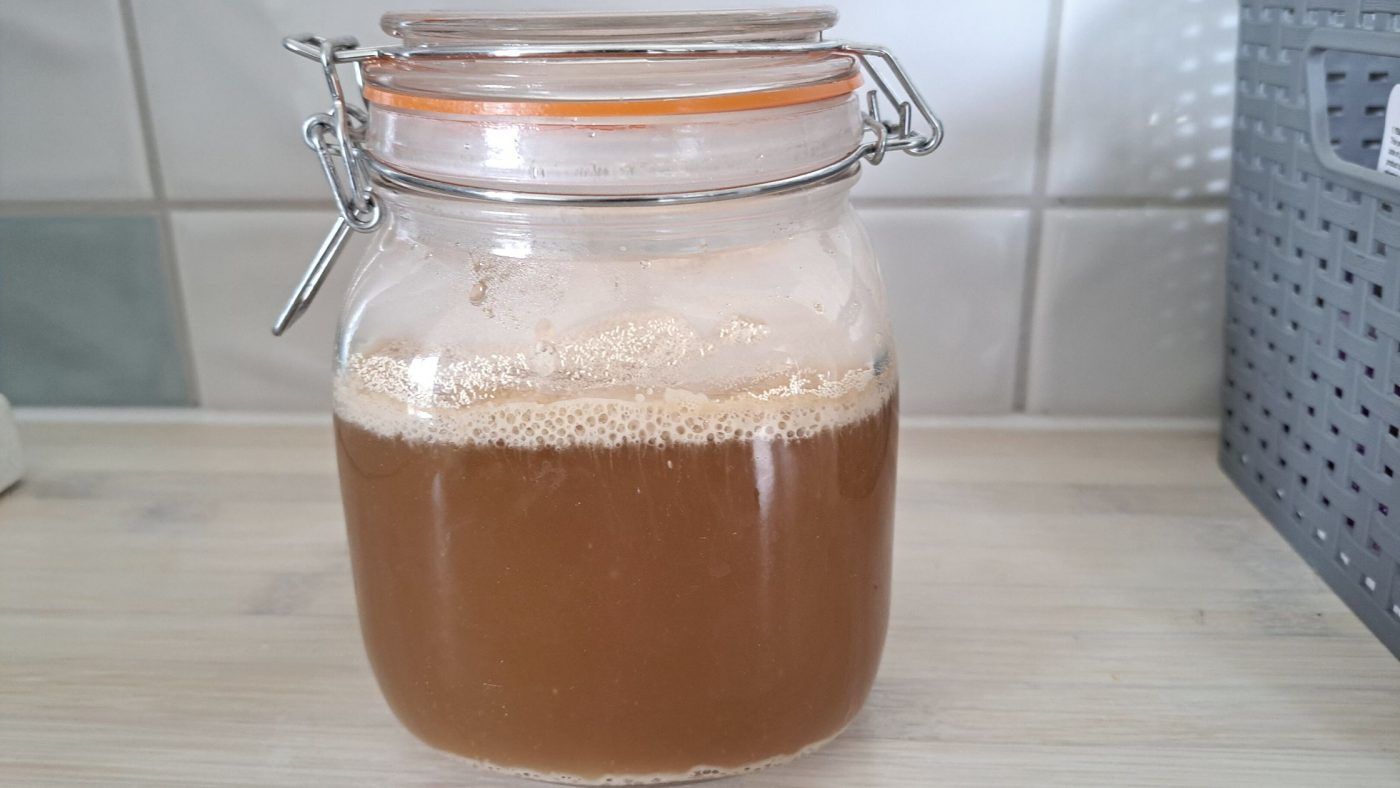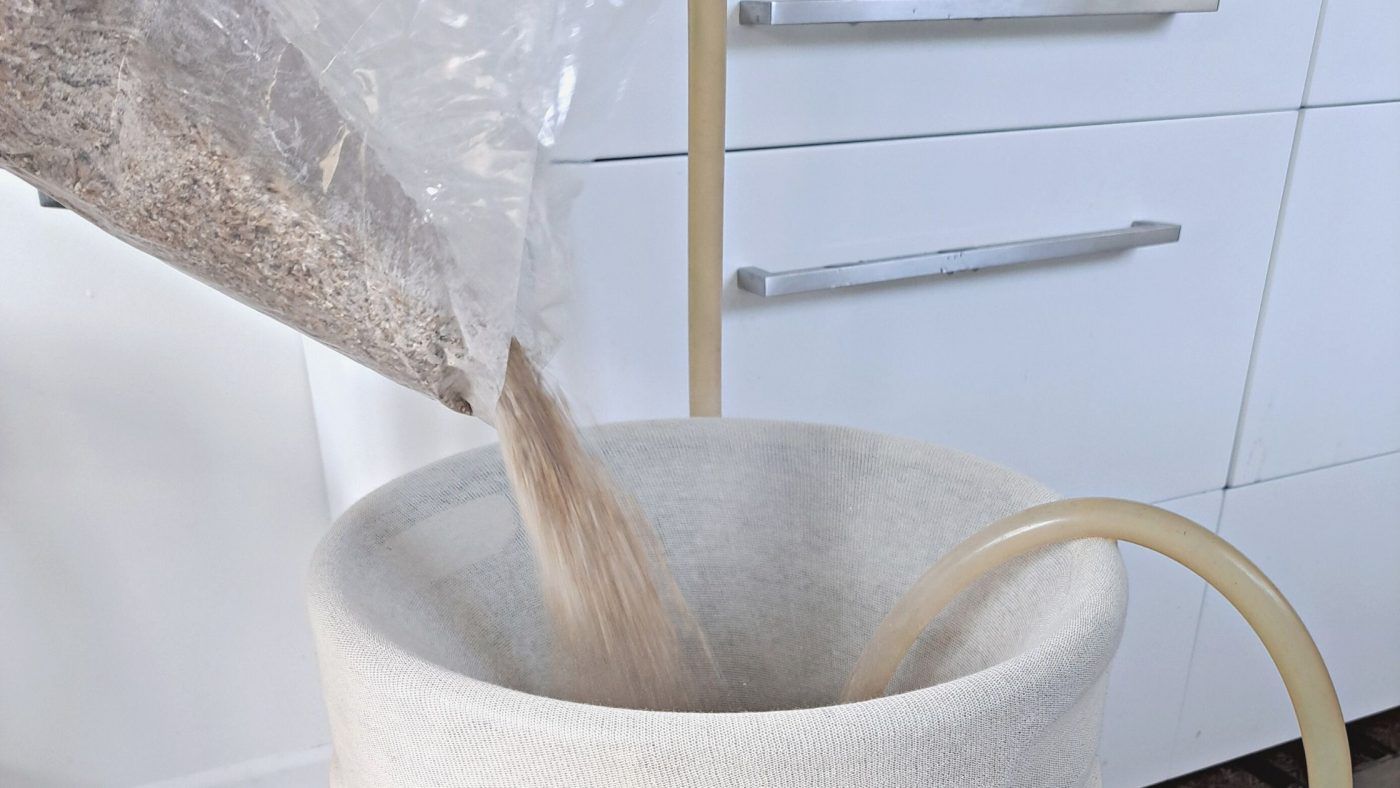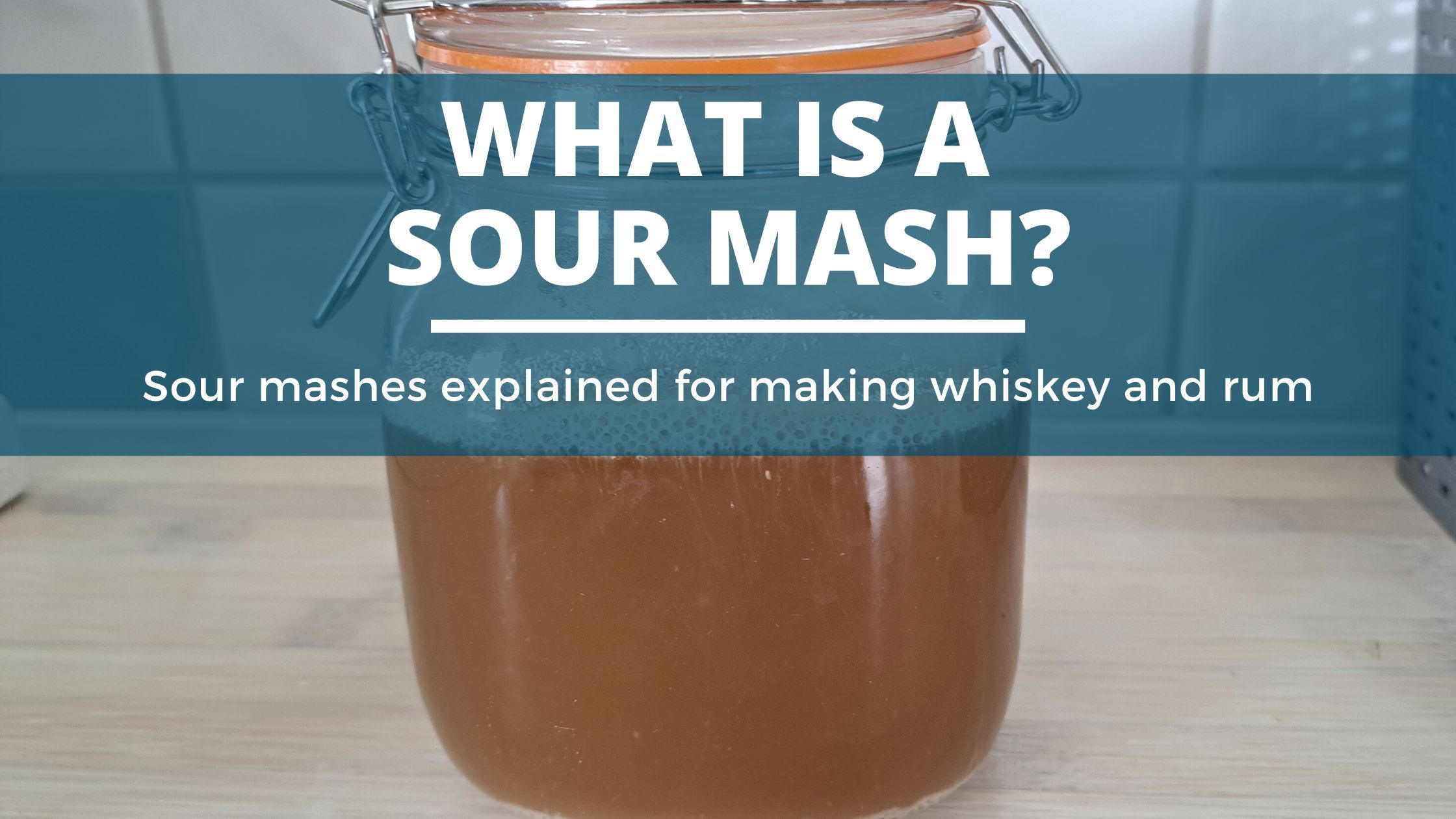Distilling 101, Fermentation, Rum, Whiskey
What Is A Sour Mash (For Making Whiskey And Rum)?
Whether or not sour mashing creates a better-tasting drink is a controversial topic.
While some distillers opt for the regular mash route because they believe it produces a cleaner and smoother final product, some still enjoy using a sour mash because it balances the pH of the wash and creates consistent flavors for every bottle they make.
If you’re unfamiliar with this term and want to find out what a sour mash is, and how to use it when fermenting a fresh wash, carry on reading to unravel the mystery behind this process.
Table of Contents
What Is A Sour Mash?
A sour mash is a process of taking leftover distilled mash and adding it to a fresh batch of mash. It’s also referred to as backset or stillage (when referring to sour mash whiskey) and dunder (when referring to sour mash rum). Most distillers use stillage in their ferment because it assists in controlling the pH of their whiskey and keeps bacteria at bay.
Having an acidic pH not only prevents bacterial growth but adjusts the enzymes in the wash, which in turn assists in converting starch to sugar. Also, it’s a consistent way of keeping the flavor of every batch constant from bottle to bottle.

What Whiskeys Use A Sour Mash?
Most American whiskeys use a sour mash. It’s important to note that when a whiskey brand mentions sour mash on the bottle, it means the whiskey itself was made using the sour mash process, not that you’d get a sour taste when you take a sip of the beverage. Here are a few of the common whiskeys that use a sour mash.
- Jack Daniels
- Maker’s Mark
- George Dickel
- Wild Turkey
- Woodford Reserve
What Rums Use A Sour Mash?
Using sour mash for distilling is an idea that was inspired by Caribbean Islands slaves during the 18th century. Most Jamaican rums use a sour mash, with a few American rums having adopted the method of using spent mash after discovering all the beautiful flavors they get from the process.
How Does A Sour Mash Affect The Flavors Of The Final Product?
Besides regulating the pH of a wash, a sour mash has the potential of adding highly complex and intense flavors to the final product. The backset increases the flavor profile and congeners in the fermentation. Most of the time, you’ll pick up notes of caramel in your spent wash, and this potentially creates new flavors and aromas for your fresh wash.
How To Make A Sour Mash Rum (Our Guide)
Making dunder is not only limited to commercial manufacturing. A home distiller wanting to experiment and get a good bottle of Jamaican rum can replicate the method. You’ll first have to make a rum wash to make your sour mash. Follow the guide below to get started.

1. Ingredients:
- 5kg (11 pounds) unsulphured black strap molasses
- 5kg ( 11 pounds) cane or brown sugar
- 1 packet of rum yeast (We recommend using Distilamax RM)
- 2.5 gallons (9 liters) of hot water (to dissolve the sugar)
- Juice of one lemon or 1Tbsp citric acid (to acidify your water)
2. Equipment:
- Brew or stainless steel pot
- Heat source (Stove top works just fine)
- Spoon
- Thermometer
- Hydrometer (for gravity reading – we recommend the
- Cheese cloth or sieve (for clarifying your wash)
- Clean bucket
- Glass jar
3. Preparing the wash:
- Turn up the temperature of your heat source to medium-low.
- Pour 2 gallons of water into the pot.
- Add the sugar and molasses, then stir until the molasses dissolves.
- Once the sugar and molasses have dissolved, remove the pot from the heated cooktop and add the lemon juice.
- Add the remaining ½ gallon of water to allow the solution to let it cool down.
- Add the lemon juice and stir well.
- Using the thermometer, check the temperature of the wash every 5-10 minutes. You should get a temperature of 90℉.

4. Fermenting the wash:
- When your wash reaches 90℉, add the yeast.
- Stir in the yeast until it’s completely dissolved.
- Add the wash into a fermenter and allow it to ferment for up to seven days.
- After a week, check your gravity reading, and when your hydrometer reads below one, you can clarify your wash.
5. Clarifying your wash:
To remove any solids floating on top and to prevent any of them from entering your boiler, you’ll have to clarify your wash. This method simply involves straining the solids. To do this, follow these steps:
- Place the sieve on the bucket.
- Pour the liquid into the sieve and allow the liquid to flow through until all you have left in the fermenter is the solids.
- From here, you’ll need to distill your wash to retrieve the spent mash.
6. Distilling your wash:
- Pour the strained wash into the boiler.
- Heat up your still to the highest temperature.
- Allow the vapors to condense and collect into a collecting glass jar.
- Turn off your still when it’s done running, and allow it to cool. What’s left in the boiler is your rum sour wash.
When you’re ready to use your sour mash, you’ll take 20% (1 liter) of the mash and add it to your fresh wash.
How To Make A Sour Mash Whiskey (Our Guide)
A whiskey sour wash is produced using grains, typically corn. Here’s how to make a whiskey stillage.
Read More: For an in depth guide on making your own whiskey, checkout our full step-by-step instructions on how to make whiskey at home.
1. Ingredients
- 20 Litres water
- 3 kg rolled or cracked corn
- 3 kg sugar
- 1 Tbsp whiskey yeast
2. Equipment
- Fermenter
- Siphon
- Cheesecloth
3. Fermenting your wash
- Pour the water into the fermenter.
- Add your corn and sugar. Stir until the sugar has dissolved.
- Pour the yeast, and stir until it has dissolved.
- Close the fermenter and let it ferment.
- Once fermented, siphon the liquid out of the fermenter.
NOTE: Siphoning allows all the solids to remain undisturbed at the bottom. But, if you don’t have siphoning equipment, you can clarify the wash by straining it. To strain your wash, take a clean bucket and place your sieve on the bucket, then allow all the liquid to flow into the bucket.
4. Distilling your wash
- Take the wash and pour it into the boiler.
- Let the still run at the highest temperature.
- Collect your distillate (low wines) in glass jars.
The liquid left in your boiler after the run is your whiskey sour mash. Take 5 liters of this backset and add it to your fresh batch of ferment.

Frequently Asked Questions
Q. What is the difference between sour mash and bourbon?
Bourbon is a whiskey mash made up of 51%-80% corn. It’s typically aged for a minimum of two years in white American oak barrels. The fermented wash is distilled to get up to 80% alcohol by volume (190 proof).
Sour mash is the process of adding distilled mash to a fresh wash as a way of controlling its pH before fermentation. Most bourbon distillers use sour mash to make their beverages.
Q. What’s the difference between a sweet mash and a sour mash?
A sweet mash is a wash that uses fresh yeast to boost the fermentation process. Most distillers believe that it yields a cleaner and more intensely flavored whiskey. A sour mash uses a distilled (spent) leftover mash to begin a new fermentation process.
Conclusion
A sour mash is nothing more than a process of taking the spent wash and using it for a fresh batch of ferment. The method is an ideal way of creating consistency in flavor and pH. Although it’s a common technique amongst commercial distillers, it’s a transferable process that home distillers can use.
Using whiskey and rum backset is a fantastic way of creating iconic flavors instead of plain water. Whether you love rum or whiskey and want to try out your first sour mash ferment, the guide provided in this post is a great place to start.








